Amazon Route 53 - DNS (Domain Name Server) setup
In this tutorial, we'll setup our domain name using Route53. We go over pointing our nameserver to Route53, and sync up CNAME record for our domain to point to a very simple Apache web server. In our case, our ns records are already exist, and we want to copy new ns records created from Route53 over to our existing registrar's records.
A hosted zone is a container for the information about how we want to route traffic on the Internet for a domain (in our case, epicmath.com) and its subdomains if any.
To create a hosted zone:
- Open the Amazon Route 53 console at https://console.aws.amazon.com/route53/.
- Click Hosted Zones in the navigation pane.
- Click Create Hosted Zone.
- In Domain Name, enter domain name.
- Click Create.
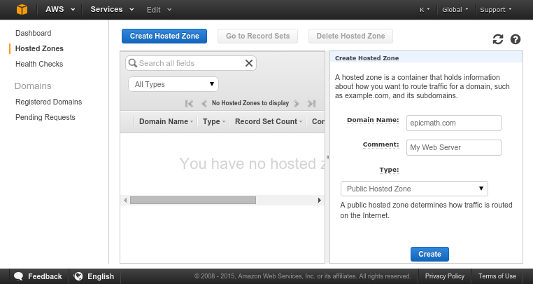
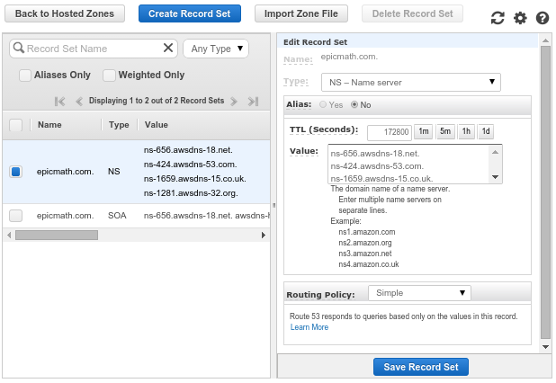
Now, we can see new NS records from aws, and we want to copy it over to our current DNS provider's records.
If we registered a new domain name, we're ready to set up Amazon Route 53 as our DNS provider.
However, in our case, we need to transfer existing DNS records from our current DNS provider to Amazon Route 53 in order to ensure the continued availability of the services hosted under the domain name.To determine which DNS records we must replicate in Amazon Route 53, check the DNS record settings configured for the domain in our current DNS provider. Two records that we should not transfer to Amazon Route 53 are the Start of Authority (SOA) and Name Server (NS) records. These records were set by Amazon Route 53 when the name servers were allocated, and they should not be changed.
First, log into the domain name registrar that we used to register our domain name. Use the web interface provided by the registrar to set the name servers for our domain to the name server values displayed under Name Servers in the details for the hosted zone.
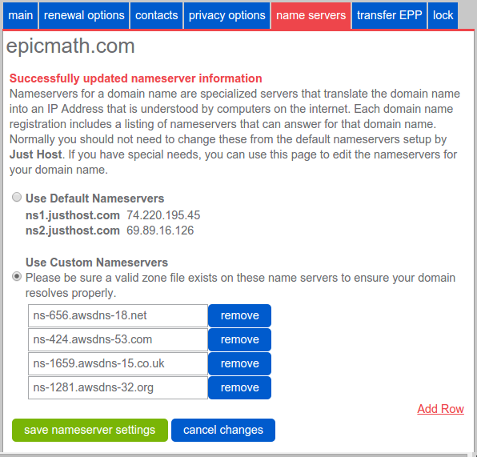
Wait between two to 48 hours for the Internet DNS resolver network to propagate name server changes. To see if the name server change has gone through, use a command line utility such as dig or nslookup.
We setup Apache web server on our ec2 instance:
$ sudo apt-get update $ sudo apt-get install apache2
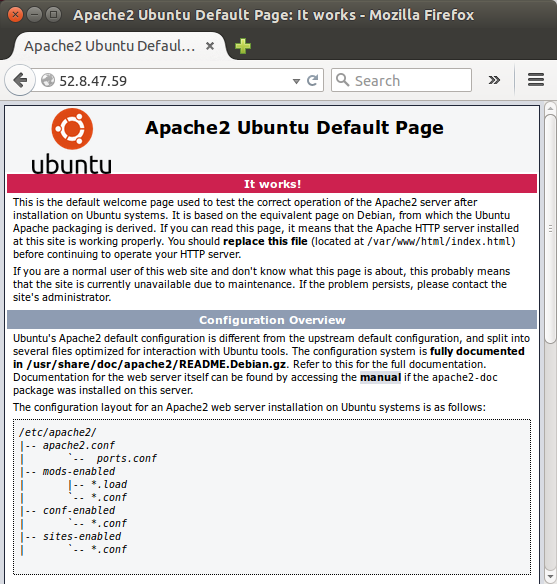
Now we want to setup a record inside of our Route53 to point our server. We're going to create a new record set.
Let's configure the alias resource record set for our www subdomain.
- On the Hosted Zones page, select the hosted zone that we created for our domain.
- Click Go to Record Sets.
- Click Create Record Set.
- Under Create Record Set, do the following:
- In Name, type www. The root domain is already specified for us, and the connecting period (.) appears when we start typing.
- From Type, select A - IPv4 address.
- In Alias, select No.
- Put ip address as a value.
- From Routing Policy, select Simple.
- Leave Evaluate Target Health set to No.
- Click Create.
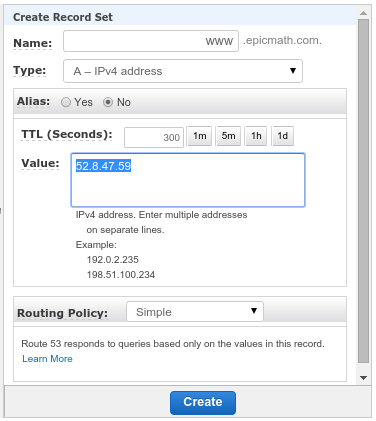
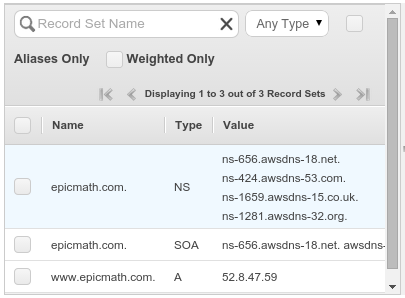
Now we want to set an alias (epicmath.com) for www.epicmath.com:
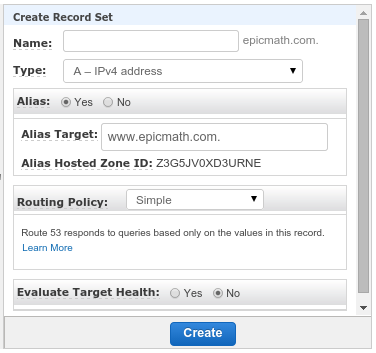
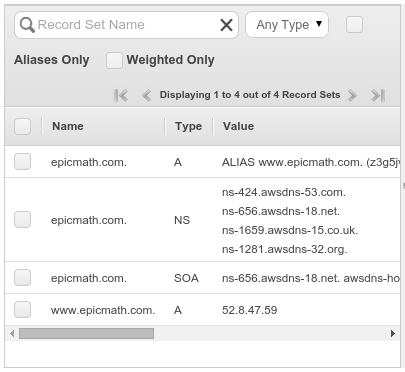
To see if the name server change has gone through, we use a command line utility such as dig or nslookup:
$ dig epicmath.com ... ;; ANSWER SECTION: epicmath.com. 300 IN A 52.8.47.59 $ nslookup www.epicmath.com ... Non-authoritative answer: Name: www.epicmath.com Address: 52.8.47.59
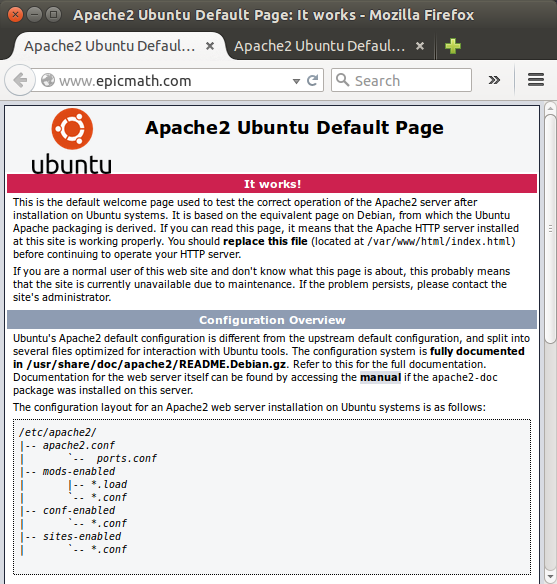
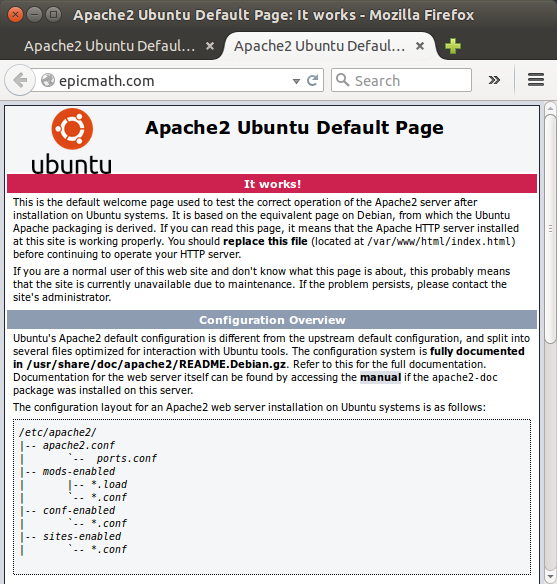
AWS (Amazon Web Services)
- AWS : EKS (Elastic Container Service for Kubernetes)
- AWS : Creating a snapshot (cloning an image)
- AWS : Attaching Amazon EBS volume to an instance
- AWS : Adding swap space to an attached volume via mkswap and swapon
- AWS : Creating an EC2 instance and attaching Amazon EBS volume to the instance using Python boto module with User data
- AWS : Creating an instance to a new region by copying an AMI
- AWS : S3 (Simple Storage Service) 1
- AWS : S3 (Simple Storage Service) 2 - Creating and Deleting a Bucket
- AWS : S3 (Simple Storage Service) 3 - Bucket Versioning
- AWS : S3 (Simple Storage Service) 4 - Uploading a large file
- AWS : S3 (Simple Storage Service) 5 - Uploading folders/files recursively
- AWS : S3 (Simple Storage Service) 6 - Bucket Policy for File/Folder View/Download
- AWS : S3 (Simple Storage Service) 7 - How to Copy or Move Objects from one region to another
- AWS : S3 (Simple Storage Service) 8 - Archiving S3 Data to Glacier
- AWS : Creating a CloudFront distribution with an Amazon S3 origin
- AWS : Creating VPC with CloudFormation
- AWS : WAF (Web Application Firewall) with preconfigured CloudFormation template and Web ACL for CloudFront distribution
- AWS : CloudWatch & Logs with Lambda Function / S3
- AWS : Lambda Serverless Computing with EC2, CloudWatch Alarm, SNS
- AWS : Lambda and SNS - cross account
- AWS : CLI (Command Line Interface)
- AWS : CLI (ECS with ALB & autoscaling)
- AWS : ECS with cloudformation and json task definition
- AWS Application Load Balancer (ALB) and ECS with Flask app
- AWS : Load Balancing with HAProxy (High Availability Proxy)
- AWS : VirtualBox on EC2
- AWS : NTP setup on EC2
- AWS: jq with AWS
- AWS & OpenSSL : Creating / Installing a Server SSL Certificate
- AWS : OpenVPN Access Server 2 Install
- AWS : VPC (Virtual Private Cloud) 1 - netmask, subnets, default gateway, and CIDR
- AWS : VPC (Virtual Private Cloud) 2 - VPC Wizard
- AWS : VPC (Virtual Private Cloud) 3 - VPC Wizard with NAT
- DevOps / Sys Admin Q & A (VI) - AWS VPC setup (public/private subnets with NAT)
- AWS - OpenVPN Protocols : PPTP, L2TP/IPsec, and OpenVPN
- AWS : Autoscaling group (ASG)
- AWS : Setting up Autoscaling Alarms and Notifications via CLI and Cloudformation
- AWS : Adding a SSH User Account on Linux Instance
- AWS : Windows Servers - Remote Desktop Connections using RDP
- AWS : Scheduled stopping and starting an instance - python & cron
- AWS : Detecting stopped instance and sending an alert email using Mandrill smtp
- AWS : Elastic Beanstalk with NodeJS
- AWS : Elastic Beanstalk Inplace/Rolling Blue/Green Deploy
- AWS : Identity and Access Management (IAM) Roles for Amazon EC2
- AWS : Identity and Access Management (IAM) Policies, sts AssumeRole, and delegate access across AWS accounts
- AWS : Identity and Access Management (IAM) sts assume role via aws cli2
- AWS : Creating IAM Roles and associating them with EC2 Instances in CloudFormation
- AWS Identity and Access Management (IAM) Roles, SSO(Single Sign On), SAML(Security Assertion Markup Language), IdP(identity provider), STS(Security Token Service), and ADFS(Active Directory Federation Services)
- AWS : Amazon Route 53
- AWS : Amazon Route 53 - DNS (Domain Name Server) setup
- AWS : Amazon Route 53 - subdomain setup and virtual host on Nginx
- AWS Amazon Route 53 : Private Hosted Zone
- AWS : SNS (Simple Notification Service) example with ELB and CloudWatch
- AWS : Lambda with AWS CloudTrail
- AWS : SQS (Simple Queue Service) with NodeJS and AWS SDK
- AWS : Redshift data warehouse
- AWS : CloudFormation
- AWS : CloudFormation Bootstrap UserData/Metadata
- AWS : CloudFormation - Creating an ASG with rolling update
- AWS : Cloudformation Cross-stack reference
- AWS : OpsWorks
- AWS : Network Load Balancer (NLB) with Autoscaling group (ASG)
- AWS CodeDeploy : Deploy an Application from GitHub
- AWS EC2 Container Service (ECS)
- AWS EC2 Container Service (ECS) II
- AWS Hello World Lambda Function
- AWS Lambda Function Q & A
- AWS Node.js Lambda Function & API Gateway
- AWS API Gateway endpoint invoking Lambda function
- AWS API Gateway invoking Lambda function with Terraform
- AWS API Gateway invoking Lambda function with Terraform - Lambda Container
- Amazon Kinesis Streams
- AWS: Kinesis Data Firehose with Lambda and ElasticSearch
- Amazon DynamoDB
- Amazon DynamoDB with Lambda and CloudWatch
- Loading DynamoDB stream to AWS Elasticsearch service with Lambda
- Amazon ML (Machine Learning)
- Simple Systems Manager (SSM)
- AWS : RDS Connecting to a DB Instance Running the SQL Server Database Engine
- AWS : RDS Importing and Exporting SQL Server Data
- AWS : RDS PostgreSQL & pgAdmin III
- AWS : RDS PostgreSQL 2 - Creating/Deleting a Table
- AWS : MySQL Replication : Master-slave
- AWS : MySQL backup & restore
- AWS RDS : Cross-Region Read Replicas for MySQL and Snapshots for PostgreSQL
- AWS : Restoring Postgres on EC2 instance from S3 backup
- AWS : Q & A
- AWS : Security
- AWS : Security groups vs. network ACLs
- AWS : Scaling-Up
- AWS : Networking
- AWS : Single Sign-on (SSO) with Okta
- AWS : JIT (Just-in-Time) with Okta
Ph.D. / Golden Gate Ave, San Francisco / Seoul National Univ / Carnegie Mellon / UC Berkeley / DevOps / Deep Learning / Visualization